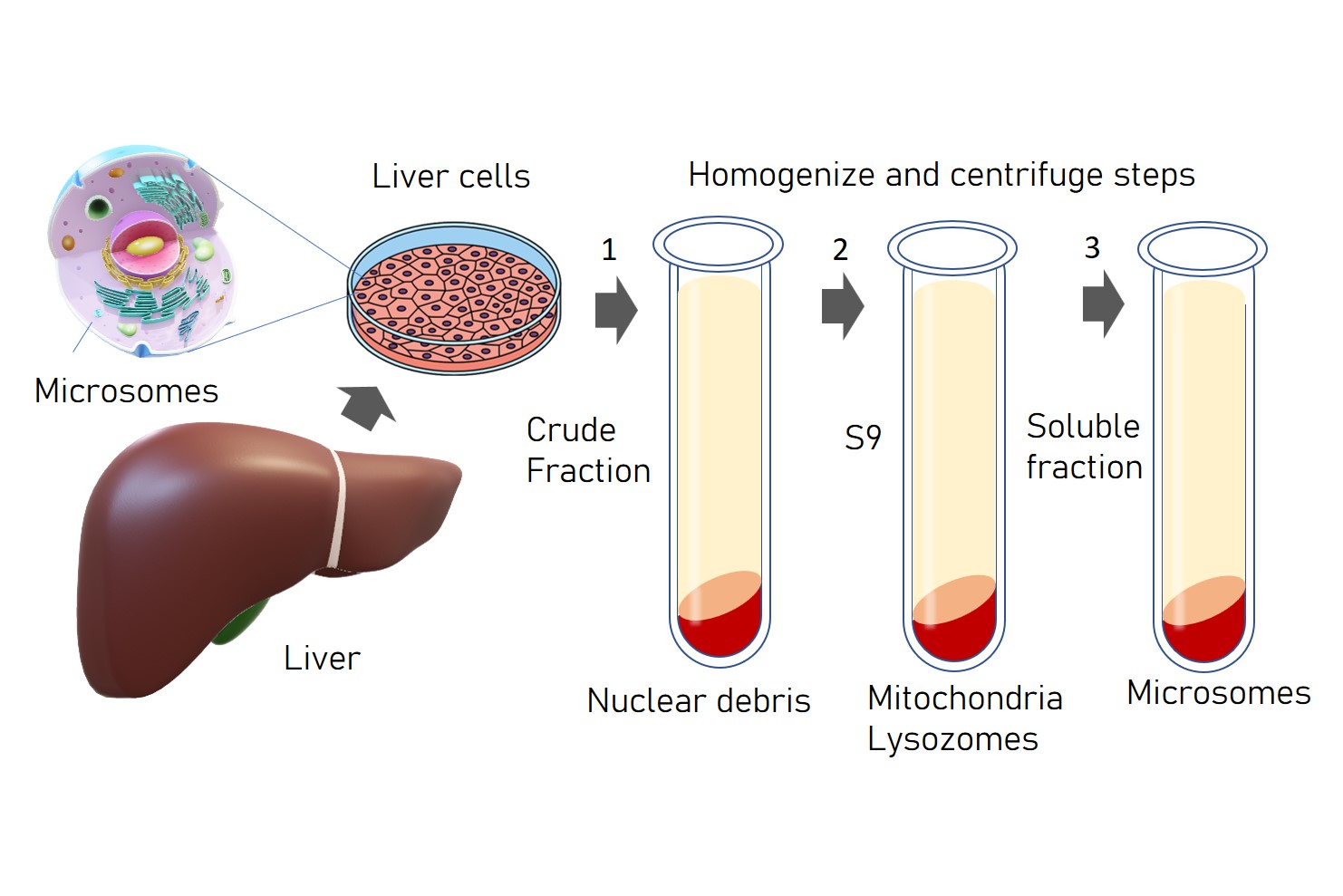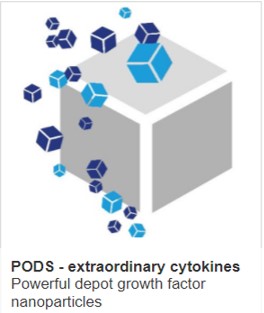New primary liver cell microsome products

Cell Guidance Systems today launches our primary liver-derived microsome products. These new products, made from primary human and animal liver cells, join our growing range of primary cell products launched last year. Further details of the products are available on the product page.
Microsomes are vesicular fragments formed from the endoplasmic reticulum when cells are broken up. They contain enzymes important for drug metabolism, notably the cytochrome P450 enzymes. and therefore play a crucial role in ADME (Absorption, Distribution, Metabolism, and Excretion) and toxicology assays due to their ability to mimic certain aspects of human metabolism. Purified microsomes are isolated through a series of steps of homogenization and centrifugation (see main image) with each fraction containing progressively purified microsomes. The final fraction containing purified microsomes can be used in the lab in a variety of assays.
These enzymes are crucial for phase I metabolism, where they help in the oxidation, reduction, and hydrolysis of drugs. By using microsomes in vitro, researchers can study how a drug is metabolized by the liver, predict potential metabolites, and understand the drug’s pharmacokinetics.
Drug-Drug Interaction (DDI) Studies
Microsomes are used to assess the potential of a drug to inhibit or induce cytochrome P450 enzymes, which can lead to drug-drug interactions. Inhibition studies can help predict whether a new drug will inhibit the metabolism of other drugs, leading to increased blood levels of those drugs and potential toxicity. Induction studies can determine if a drug will increase the metabolism of other drugs, potentially reducing their efficacy. By using microsomes containing specific CYP enzymes, researchers can identify which enzymes are affected by a new drug, helping in the prediction and management of possible drug-drug interactions.
Toxicology Assays
Microsomes are also used in toxicology to assess the potential toxicity of metabolites. Since many drugs are converted into their active or toxic forms through metabolism, understanding these metabolic pathways is crucial for predicting drug safety. Microsomal assays can help identify toxic metabolites and the specific enzymes involved in their formation. This information is vital for designing safer drugs and for developing strategies to mitigate potential toxic effects.
Enzyme Kinetics
Microsomes allow for the study of enzyme kinetics in drug metabolism. Researchers can determine the rate at which a drug is metabolized by microsomal enzymes, which is important for understanding its pharmacokinetics. Parameters such as Km (Michaelis constant) and Vmax (maximum velocity) can be derived, which are essential for predicting how changes in drug concentration or enzyme levels affect drug metabolism.
Species Comparison
Since microsomes can be prepared from the liver tissues of different species, they are used to compare metabolic pathways across species. This is important in the early stages of drug development, where understanding interspecies differences in metabolism can guide the selection of appropriate animal models for preclinical studies. By comparing the metabolism of a drug in human microsomes with that in microsomes from other species, we can predict how the drug might behave in humans based on its metabolism in animal models. This comparison helps in assessing the relevance of animal toxicity data to humans and in making more informed decisions about the safety and efficacy of a drug before it enters clinical trials.
Screening for Metabolic Stability
Microsomes are used to screen compounds for metabolic stability early in the drug development process. A compound that is rapidly metabolized may have poor bioavailability, requiring modifications to improve its stability. By testing a series of compounds in microsomal assays, researchers can identify those with favourable metabolic profiles for further development.
Identification of Drug Transporters
Some microsomal preparations can also contain drug transporters, which are proteins that facilitate the movement of drugs across cell membranes. Studying the interaction of drugs with these transporters in microsomes can provide insights into their role in drug absorption and excretion, further informing ADME properties.
Customization and High-Throughput Screening
Microsomal assays can be customized to target specific enzymes or pathways of interest, allowing for focused investigation into the metabolism and toxicity of a drug. Additionally, these assays can be adapted for high-throughput screening, enabling the rapid assessment of a large number of compounds. This efficiency is particularly valuable in the early stages of drug discovery, where identifying compounds with favourable ADME and toxicological profiles can significantly streamline the development process.
Predictive Modeling
Data obtained from microsomal assays can be integrated into pharmacokinetic and pharmacodynamic (PK/PD) models to predict the behaviour of a drug in vivo. These models can simulate how modifications to a drug’s chemical structure or dosing regimen might affect its metabolism, efficacy, and safety in humans. Predictive modelling using microsomal data helps in optimizing drug design and development strategies, reducing the need for extensive in vivo testing by providing early insights into a drug’s pharmacokinetic profile.
Risk Assessment for Drug-Induced Liver Injury (DILI) Microsomes can be used to assess the risk of drug-induced liver injury, a significant concern in drug development and post-market drug safety. By identifying compounds that produce toxic metabolites or interfere with normal liver enzyme function, researchers can flag potential DILI risks early in the development process. This early detection is crucial for avoiding the development of drugs with unacceptable safety profiles.
Environmental Toxicology Beyond pharmaceutical applications, microsomes are also used in environmental toxicology to study the metabolism and toxicity of environmental contaminants, such as pesticides and industrial chemicals. These studies can help in understanding the potential impact of these substances on human health and the environment, guiding regulatory decisions and mitigation strategies.
IMAGE: Microsome purification Credit: Cell Guidance Systems



